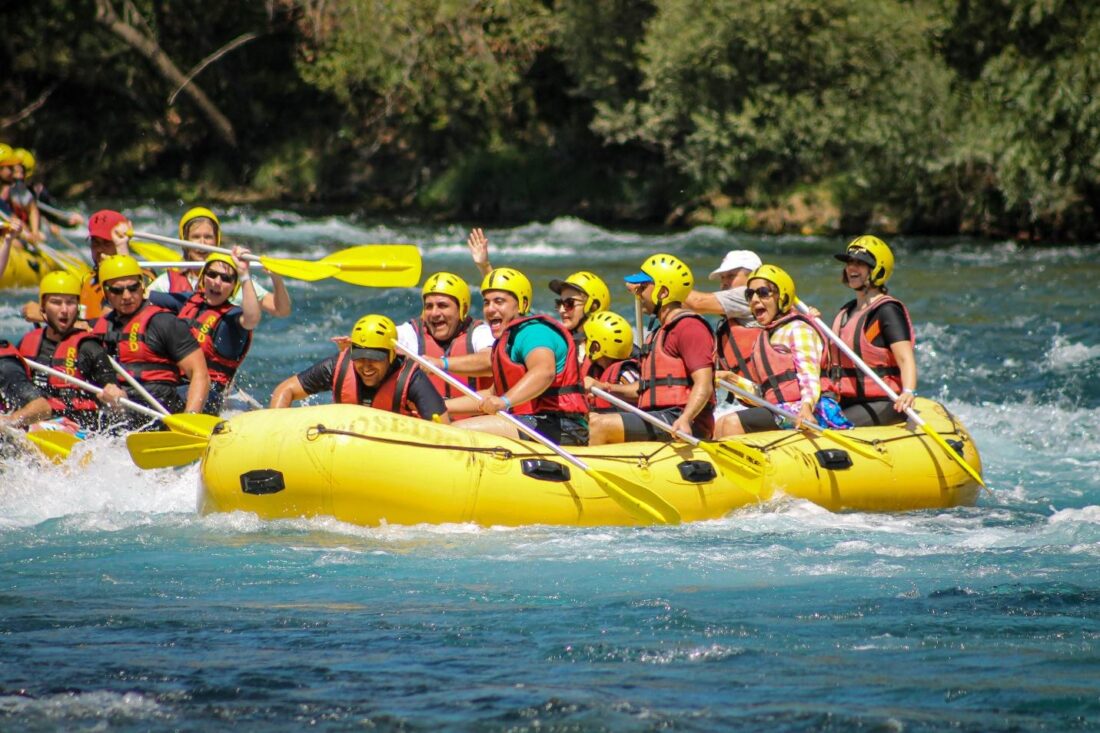Embarking on adventure trips is an exhilarating pursuit that often involves pushing one’s physical limits and embracing the unpredictability of nature. Whether you are an avid hiker, a thrill-seeking rock climber, or a passionate water sports enthusiast, the potential for injuries is an inherent part of the adventure.
However, being prepared to handle injuries can make all the difference in ensuring a safe and enjoyable journey. In this guide, we will explore seven essential tips to effectively deal with injuries on your adventure trips.

1. Prioritize Safety Precautions:
Before embarking on an adventure trip to Chandler, it’s essential to prioritize safety by taking proactive measures. Start by assembling a well-stocked first aid kit tailored to the specific requirements of your journey. This kit should include fundamental supplies such as bandages, antiseptic wipes, pain relievers, blister treatments, and any necessary prescription medications for the participants. Additionally, equip yourself with navigation tools, whether it’s a map, compass, or GPS device, to prevent getting lost in unfamiliar terrain. Sharing your detailed itinerary with a trustworthy individual is crucial, as it ensures someone is aware of your plans and can raise the alarm in case of emergencies, enhancing the overall safety net of your adventure.
2. Educate Yourself on Basic First Aid:
Knowing basic first aid is a fundamental skill that can be a lifesaver in remote or challenging environments. Consider enrolling in a wilderness first aid course to acquire the necessary skills for addressing common injuries. These courses typically cover techniques for cleaning and dressing wounds, stabilizing fractures, and recognizing signs of dehydration and hypothermia. The more knowledge you possess, the better equipped you’ll be to respond effectively to unexpected situations that may arise during your adventure, instilling a sense of confidence and preparedness.
3. Emergency Treatment for Common Injuries:
Injuries can be an unfortunate reality during adventure trips, and being prepared to address common issues is crucial. Consider including items in your first aid kit for injuries such as cuts, sprains, and insect bites. Additionally, be mindful of dental injuries, which can occur unexpectedly. In the case of a dental emergency, having a dental first aid kit with items like dental wax, over-the-counter pain relievers, and a small container for a knocked-out tooth can prove invaluable.
Moreover, for more severe dental issues, such as a broken tooth or severe toothache, consider researching and noting the contact information for emergency dentists in the area you’ll be exploring. For instance, if you sustained dental injuries while exploring Chandler, it’s best to contact an emergency dentist in Chandler. This proactive approach ensures swift access to professional dental care, enhancing your ability to manage unexpected dental emergencies with efficiency and expertise.
4. Communication is Key:
Effective communication is paramount in emergencies. If you have access to communication devices such as a satellite phone or emergency beacon, utilize them immediately to call for help. Convey critical information, including your location, the nature of the injury, and any other relevant details, to emergency services. In the absence of electronic communication, resort to visual signals, such as brightly colored clothing or a signal mirror, to attract attention from potential rescuers. Timely and accurate communication significantly improves the chances of receiving prompt assistance, reinforcing the importance of staying connected in challenging situations.
5. Teamwork and Support:
In a group setting, collaboration is invaluable when dealing with injuries. Assign specific roles to each member, designating someone to take charge of first aid, another to handle communication, and others to assist the injured person. Working together ensures a more organized and efficient response to the situation. Moreover, the emotional support provided within the group not only aids the injured individual but also strengthens the resolve of those involved in the response, creating a cohesive and supportive environment during challenging times.
6. Stay Calm and Assess the Situation:
In the unfortunate event of an injury, maintaining a calm demeanor is crucial. Panic can cloud judgment and lead to poor decision-making. Begin by assessing the situation carefully, taking note of the injured person’s condition and the severity of the injury. Prioritize your safety before attempting to assist others, and if feasible, move the injured individual to a safer location away from potential hazards like cliffs, steep slopes, or fast-flowing rivers. A composed approach ensures a more effective response to the situation, promoting better outcomes for all involved.
7. Plan for Evacuation:
Acknowledging that some situations may require evacuation is essential for comprehensive trip preparation. Have a well-thought-out evacuation plan in place, outlining the steps needed to get the injured person to safety. This may involve arranging for a helicopter evacuation in more remote areas or organizing a group effort to carry the injured individual to a more accessible location. Be familiar with potential evacuation routes, and ensure that everyone in the group is aware of the plan. Planning for evacuation enhances the group’s readiness to respond effectively to emergencies, contributing to the overall safety of the adventure and ensuring a coordinated and swift evacuation if needed.
Conclusion
Adventure trips offer a unique blend of excitement and challenges, where the line between a memorable experience and a potential injury can be thin. By incorporating the seven tips discussed in this guide, you empower yourself to mitigate risks and respond effectively in the face of adversity.
Remember, being prepared is not a deterrent to adventure but a means to enhance your overall experience. As you venture into the great outdoors, armed with knowledge and precautionary measures, you can savor every moment, confident in your ability to navigate the unexpected and create lasting memories for a lifetime.




